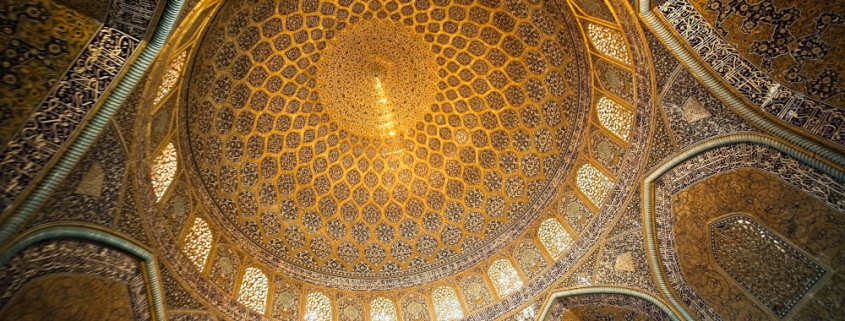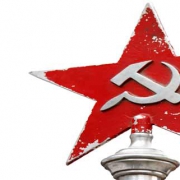Iranian LNG for Europe – reality or pipe dream?
Since my earliest days in LNG, I have lived with the specter of Iranian LNG. Iran was always one of the potentially emerging LNG superpowers. Well – sort of at least.
Since 1972, when the first concept for an LNG project was conceived until this very day, not one single drop of LNG has been produced on Iranian soil, nor has one been consumed. No other country on earth has consistently shown such incredible potential for LNG for so many decades and to this day has left the world disappointed.
With the Ukrainian stalemate, Russian gas supplies to Europe are finally being seen for what they truly are, a liability for the old continent. Once more, European politicians, bureaucrats, and energy executives are bickering over energy security and the potential consequences of a freeze of Russian energy deliveries. Europe needs a new energy partnership or better, it needs a whole array of them, as we probably don’t want to repeat the mistakes of the past and throw all our eggs in one single nest again.
The shale revolution in North America has also made Europeans ask hard questions about energy security and independence. Such independence could not possibly be understood the way a US politician would understand it. Even if there were a willingness to go for shale, it sure would be a decade away or more.
We need something else for energy independence and this something else can only be a wide array of solid sources of primary energy. If one single source ever dried up or even defaulted, it would not hurt so badly. Iran could be an important piece in this entire new energy superstructure if it just could carry its weight.
But is Iran a truly realistic and economic alternative to Russian gas? Let’s run the numbers using one of the more famous future supply options Russia puts on the table – Turk Stream.
Depending on how one looks at it, the Russian pipeline system bringing gas from West Siberia is between 3000 and 3500 km long before it hits the shores of the Black Sea. It’s a pretty old system that looks back on at least 30 years of operations. This means that serious renovation works would have to be conducted to keep it in shape, but with Gazprom in bad financial shape now, this looks increasingly difficult to pull off. Not really a recipe for making transport from Siberia any cheaper.
A newly built or refurbished system would have to bear the cost of re-financing. But we are still only at the shores of the Black Sea. Now comes a little less than 1000km of steel tubes in a very deep and very inhospitable offshore environment. After that, we are still deep in the Turkish Balkans, not the easiest pipeline environment, and way more than a thousand km and a wild array of nations to cross before Central Europe may sip Russian gas through this new route.
It’s hard to put definite numbers on this but conventional wisdom holds that starting somewhere between 2500 and 3500km, LNG becomes more economical than onshore pipelines. This means that already well inside Russia, the point of economically feasible gas transport has been crossed, and we are not even talking about the very expensive offshore section as well as all the countries in the Balkans that would no doubt extract a handy ransom for crossing its territory.
Russia is not going to fool us into believing their gas is going to be the cheap option just because they are trying to lure the Turks with discounts right now. One day they will have to repair the Druzhba and that will be the end of discounts for new pals. We are also not even touching on the prospect of a gas supply problem in Russia proper.
Iranian LNG would, on the other hand, be produced in the Persian Gulf – a healthy 5000 km or more away from Central European markets. Nabucco already showed us that using a pipeline for this distance is economically foolish. But just beside Iran, there is Qatar and it produces LNG for Europe at a profit. If it can, what reason should there be that Iran could not? Right, there is none.
Popular imagination holds that LNG is very expensive by nature and it all goes to Asia – but is it? Qatar produces LNG at a cost point of about 1,5 USD/MMBtu. Put another 1,5 USD/MMBtu on top of that for transport to North Western Europe and about 0,5 USD/MMBtu for re-gasification and we have Natural Gas at 3,5 USD/MMBtu. The true price of LNG does not reflect the technical cost of LNG although in some cases that might be a bit closer to the truth. But I digress.
The price of LNG reflects the supply/demand balance of the world. When the world wants more LNG than the world can provide, prices go up and vice versa. That’s pretty much the case for almost anything. Do you think the price of oil reflects extraction and transport costs?
Let’s take this a little further – if LNG is not so expensive in the first place after all, why is it that pipeline gas is cheaper? Is it? Look at Chile before LNG hit it. Whatever natural gas existed there was all pipeline gas – mostly from Argentina and there never seemed to be enough of it so prices hit the roof.
So much in fact that LNG looked pretty cheap compared to it. That’s why they got LNG terminals to complement whatever expensive gas they had with a more moderately priced resource. Getting some more independence from fickle Argentina sure was a potent driver.
And even if for years most LNG went to high-price Asia, the party seems over now. European terminals see cargos again and many. Every bubble bursts finally.
Back to Iran. The problem there is not technology, nor its location, or even the gas supply problem many experts see on the horizon. Iran will have to finally reform its domestic gas market which will free up copious amounts of gas to liquefy and export. Besides, there are some islands in the Gulf such as Lavan whose gas is more or less stranded and makes great feedstock for LNG.
In 2008, I was involved in the Iran LNG negotiations and hence got a taste of the real problem. Due to sanctions, Iran tried to force the issue by building whatever they could on their own, surely also to retain control over something that was, in fact, more than they could handle alone. And this was made especially hard by public institutions and ministries on the one side and Republican Guards on the other playing the obstruction game at every twist and turn.
It still was an admirably courageous initiative and also one that has cost Iran quite some cash. But if the central piece – the liquefaction train – is missing, it’s just a white elephant in the desert. Could it be brought back to life?
The problem is neither technology nor is it truly finance. The real problem is that in the past, big-scale LNG projects took a relationship of trust between a buyer willing to do what it takes to get the LNG project off the ground and a seller willing to do what it takes to make at least some money off his gas that it cannot use otherwise. In the end, today’s LNG is the stranded gas of the past.
There must be a realization on both sides that posturing, gambling, and bluffing are not going to work for either side. No project means anything to anyone.
And here we get to the heart of the problem. Buyers think they can never trust Iran and must get everything set in stone before they are engaged. There needs to be at least one foundational buyer who takes things actively into his hands and does not wait until they happen by themselves. This means cooperation in good faith, help, and assistance without nailing every last detail of it before the engineers make a move, and it means trust between the parties.
And Iran as the seller thinks that it must squeeze potential buyers on price and flexibility to match what sellers like Qatar get. However, Qatar was not as difficult a counterparty in the past as it is right now with buyers and partners. It opened its arms and gave those willing to develop the first LNG trains a deal they could not possibly refuse to make them do what was needed. Only with time, did they become what they are now but then the LNG trains were producing at capacity. Now they have something to sell – now they can afford their position. Well, sort of at least.
When Iran announces new contracts being offered to oil companies in September in London, it better put some of this cooperative spirit into the drafts. If it’s another “It’s my way or the highway” story, the LNG world is going to take note and play the “dragging the foot” game.
Iran has a lot of potential, but no LNG ready to be sold. To get there, it needs foundational buyers who will be forced to swallow a bitter pill which is taking the risk on the entire supply chain. Buyers will only consider doing so if Iran offers them a great deal and allows them to skim at least part of the cream off the top.
LNG from Iran would be a great alternative to Europe complementing its clean energy portfolio and it’s a very viable option if only those involved can put their heads together until a compromise that is palatable to both parties is found. But this is another story.


















Nice article Rudolf. Hope all is well with you. Anthony
Thanks Anthony, life has been generous with me I must admit. Thanks for the kudos on the Iran piece. Its just the beginning on a long series on strategic gas options for Europe. Second piece comes in September on Russias perceived and real gas capabilities. How are things with you?
Just curious – is there a chance that either Iran LNG or Persian LNG will come back to life? Or they are buried way too deep?
Persian LNG was never realistic to begin with so the original project should be scraped and replaced by something that makes more sense in todays world. Iran LNG on the other hand could probably be salvaged but there needs to be deep Due Diligence on what they have in place now and a no-nonsense attitude. Thats not easy …